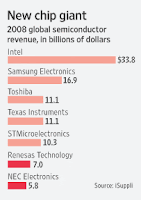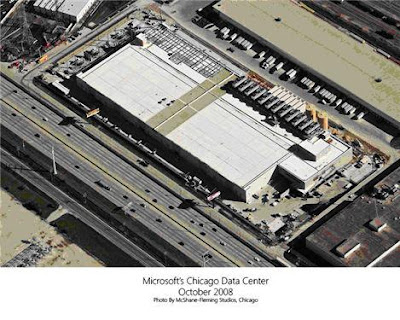Story from ZD NetLaptops have long since overtaken their desk-bound brethren in terms of revenues, and more recently unit sales. In the first quarter, desktop unit sales dropped 23 percent, while notebook sales actually increased 10 percent compared with the same period last year, according to iSuppli. Gizmodo even penned an obituary for the desktop this week. But rumors of the desktop’s demise are premature. Take a closer look at iSuppli’s numbers: Desktops still accounted for 47 percent of all PCs sold worldwide–more than 30 million units–in the first quarter. Desktops are still big business.

Over the past week or so, PC makers have been rolling out their Back to School boxes. The laptops and netbooks get more coverage, but these new desktops are still worth a look, especially to see the sort of features you can get in systems ranging from $300 to $900.
HP has announced several new models. As usual, all of the HP-branded desktops have an AMD-based configuration at the low-end as well as slightly high-priced configurations with Intel processors. The Slimline s5000 is a small form factor desktop that currently starts at $290 (s5100z) with a 2.8GHz AMD Athlon LE-1660 single-core processor, 2GB of memory, Nvidia GeForce 6150 integrated graphics, and a 320GB hard drive. The $370 s5110t has a 2.50GHz Pentium E5200 dual-core processor, 3GB, and a 320GB hard drive; the $450 s5150t has a 2.60GHz Pentium E5300, 4GB, and a 500GB hard drive. The Pavilion p6000 is a low- to mid-range mini-tower desktop that starts at $270 with a 2.3GHz AMD Sempron LE-1300 single-core processor, 2GB of memory, Nvidia GeForce 6150 graphics and a 320GB hard drive. The p6110t and p6150t have the same basic configuration and pricing as the Slimline series.
At the high-end, the HP’s Pavilion Elite e9000 series starts at $600 (e9100z) with a 3.0GHz AMD Phenom II X2 545 dual-core processor, 4GB of memory, Nvidia GeForce G210 graphics with 512MB, and a 500GB hard drive. The $700 e9110t has an older Intel Core 2 Quad chip and the top-of-the-line e9150t starts at $900 with the newer Core i7-920 quad-core processor, 6GB of memory, ATI Radeon HD 4650 graphics with 1GB, and a 750GB hard drive. Finally, the Compaq Presario CQ5110F is a basic mini-tower available in only one $350 configuration with an AMD dual-core processor.
Dell has not announced new desktops since the introduction last month of the Inspiron 546 mini-tower and Inspiron 537s slim desktop. A direct competitor to the Pavilion p6000, the Inspiron 546 starts at the same price ($270) as the p6100z and has the same configuration with the exception of ATI Radeon HD 3200 graphics. Interestingly the Inspiron 546 is AMD only. By contrast, the Inspiron 537s, which competes directly with HP’s Slimline series, is Intel only. It starts at $300 with a 2.20GHz Celeron 450, 2GB of memory, Intel integrated graphics, and a 320GB hard drive. All of these Dell Inspiron and HP Pavilion models offer optional Blu-ray drives and TV tuners. The only obvious difference is that, in addition to glossy black, the new Dell models are available in eight colors, though this option adds $30 to the system price.
Acer has just revamped its desktop line, and looking over the new configurations and pricing, it’s easy to see why the company has been coming on strong. The high-end Aspire M5800 starts at $800 (M5800-U5802A) with a 2.66GHz Intel Core 2 Quad Q9400, 8GB of memory, Nvidia GeForce GT230 graphics with 1.5GB, and a 750GB hard drive. That stacks up well against the HP Pavilion e9150t, which has a Core i7 chip but also costs $100 more. The mid-range Aspire M800 series competes with the Pavilion p6000 and Inspiron 546. The $450 Aspire M3800-U3802A has a Pentium E5200, 4GB of memory, Intel integrated graphics, and a 640GB hard drive, a similar configuration to the Pavilion p6150t, which is also $450. It’s harder to compare these two with the AMD-based Inspiron 546, but I’d probably give the edge to Dell here. You can configure the Inspiron 546 with a 2.5GHz AMD Athlon X2 7550 dual-core processor, 4GB of memory, ATI Radeon HD 3200 graphics, and a 500GB hard drive for $464. (Note that I used Vista Home Premium SP1 for all these comparisons.)
Finally, Acer updated its small form-factor desktop. The Aspire X3810-B3801A starts at $530 with a Pentium E5200, 4GB of memory, Intel integrated graphics, a 320GB hard drive, and a 20-inch widescreen LCD display. The Inspiron 537s with the same configuration and the Dell S2009W 20-inch widescreen is $644. HP is more competitive: The Pavilion s5110t with a similar configuration and the HP 2009m 20-inch widescreen LCD is also $530. The s5100 series uses the older Intel GMA 3100 graphics, but you get a “free upgrade” to a 500GB hard drive.
Acer also gave its Gateway lineup an overhaul. Gateway’s first small form-factor desktop, the SX series, is more impressive than all three of the others. The SX2800-01 is available starting this week for $500 with a 2.33GHz Core 2 Quad Q8200, 4GB of memory, Intel GMA X4500 integrated graphics, and a 640GB hard drive. A 20-inch LCD display would add $130 to the price, but the SX2800-01 has a more powerful processor and larger hard drive. The DX series, Gateway’s standard mini-tower, starts at a little more than $500, but the company is pushing two higher-end configurations. The $750 DX4300-03 has a 2.4GHz AMD Phenom X4 9750 quad-core processor, 8GB of memory, ATI Radeon HD 4650 graphics with 1GB, and a 1TB hard drive. It will be sold on Best Buy’s site. The $900 DX4820-02 has a 2.66GHz Intel Core 2 Quad Q8400, 8GB of memory, Nvidia GeForce G210 graphics with 512MB, 750GB hard drive, and a Gateway FHX2300 23-inch widescreen LCD display. Gateway says this model will soon be available at Newegg.com. All of these are impressive configurations for the price.
I’d like to be able to point to some reviews of these new models, but there aren’t any yet. That more than anything else is an indication of which way the wind is blowing. BusinessWeek’s Stephen Wildstrom thinks that more stylish all-in-ones–along with new features such as touch-screen controls, a part of Windows 7–could reinvigorate the desktop market. I’m not so sure. There is a market for all-in-ones, but it’s a niche, and touch-controls are equally compelling on laptops. What really keeps desktops going are low prices and features such as quad-core processors, 6- or even 8GB of memory, powerful graphics and terabyte hard drives. Over the long run, the trend is pretty clear and lower-selling prices and the rollout of wireless broadband will accelerate the shift to laptops. But desktops will still have their place for some time.
 In an interview, NEC Electronics President Junshi Yamaguchi said that any new outsourcing would start after the company's proposed merger with Renesas Technology Corp. While the two chip makers have reached a basic agreement to merge by April, they are still working out the details of a plan that could lead to the creation of Japan's largest chip maker.
In an interview, NEC Electronics President Junshi Yamaguchi said that any new outsourcing would start after the company's proposed merger with Renesas Technology Corp. While the two chip makers have reached a basic agreement to merge by April, they are still working out the details of a plan that could lead to the creation of Japan's largest chip maker. "The worst is over," said Mr. Yamaguchi, a fluent English speaker who took over as NEC Electronics' president and chief executive in June. He is implementing a 90 billion yen cost-cutting program devised by his predecessor, Toshio Nakajima.
"The worst is over," said Mr. Yamaguchi, a fluent English speaker who took over as NEC Electronics' president and chief executive in June. He is implementing a 90 billion yen cost-cutting program devised by his predecessor, Toshio Nakajima.





